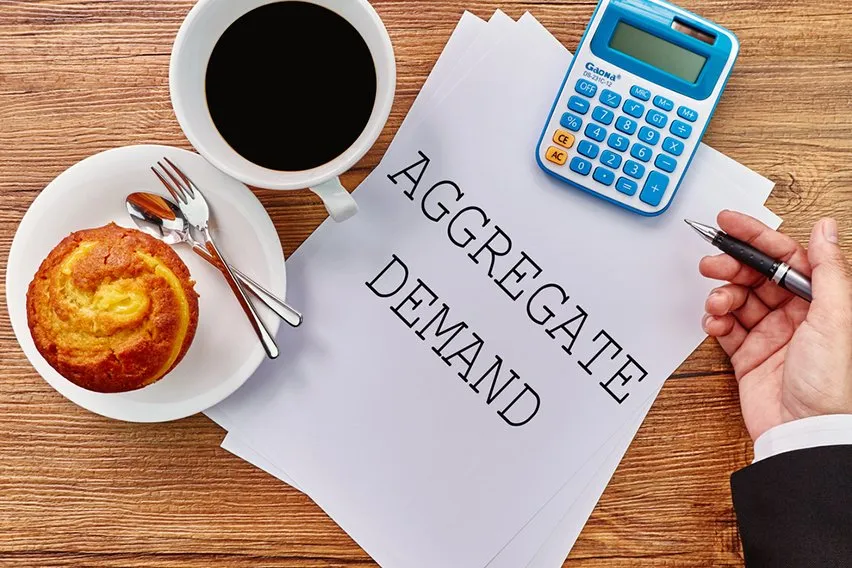What Is an Oligopoly? Definition, Characteristics & Examples

Often when discussing business, the concept of markets comes up. In business, there are a number of different market structures that businesses can participate in. Each market structure presents different challenges with market power, or market share.
In today’s economy, many firms are participating in an oligopolistic market, or an oligopoly. This term may be unfamiliar to you, but the structure of an oligopoly will likely be familiar. If you’re familiarizing yourself with markets, keep reading. We’re covering everything you need to know about oligopolistic markets!
Here’s What We’ll Cover:
Understanding the Oligopoly Structure
The Other Side of the Coin: The Prisoner’s Dilemma
What Is an Oligopoly?
An oligopoly is a market structure in the economy. The structure only has a small number of firms. Of these firms, none are a firm frontrunner. This means that no single firm has more influence than any of the others on the market. The resulting power structure means that there are no advantages present, as well.
Some market structures that may seem more familiar are monopolies and duopolies. In monopolies, a single firm has what’s called monopolistic competition. This means that they are the only firm in the market, and that they are controlling it. This means that they control the entire market, and the barrier to entry prevents other firms from participating. A monopoly quantity, as the name implies, is singular. A duopoly refers to two companies.

Oligopolies Are Common
The oligopoly may be the most common market structure today. In many markets, there are a number of firms that don’t have influence over the market itself. Rather, the companies have influence over one another. The actions of a single company or firm can influence the actions of another.
There isn’t a limit to how many companies can exist within an oligopoly. However, the number has to be small enough so that the actions of one company affects all of the others. They can’t control the market through their actions, though.
Understanding the Oligopoly Structure
Historically, many markets have existed as oligopolies. In the past, oligopolies have existed in the following industries:
- Steel manufacturers during the industrial revolution
- Railroads during the transportation boom
- Tire manufacturing with the rise of personal automobiles
- Grocery store chains as the “chain store” concept rose in success
- Wireless carriers as recently as the 1990’s, and still today
However, it’s important to realize that oligopolies don’t just exist in history. They are still functioning today, and are the most common market structure. We’ll be discussing modern day oligopolies later on in the article.
Now, there are some concerns in relation to these types of markets. In an economic and legal sense, they can present some issues. Because they are a competitive market, they have a tendency to block new entrants. Oligopoly markets also slow innovation, as well as increase prices for consumers. All of these things can cause harm to consumers.
The firms that participate in oligopolies set market prices. They do this collectively from time to time, which is known as forming prices as a cartel. However, because these firms have influence over each other, they can set prices alone, too. This is normally done under the direction of the leadership of one firm. As one firm increases or decreases prices, the other firms follow suit. In most cases, prices are increased, which increases profit margins.
How Do Oligopolies Form?
There are a certain set of conditions that allow an oligopoly to form.
The first of these conditions is high entry costs in capital expenditures. Breaking it down, this means that companies cannot afford to enter an oligopolistic market after it has formed. Because of the success of the other companies, the capital costs are too high. This can include the cost of production, or things like advertising costs. If you cannot afford to penetrate the market with advertising, then you cannot function for long as a company.
Another condition to take into consideration is legal privilege. Some markets require legal certification or authorization to function. Things like land use and wireless spectrum licensing are examples of this.
The last condition to consider is customer base. In some markets, entities with established customer bases cannot be toppled. They also do not allow for new entries, unless they are highly specialized. Take social media, for example. No social media company has a monopoly over the market. However, because of their customer bases at this time, new social media platforms hardly have a chance at success. Users stay faithful to the platforms that they’ve become accustomed to.
Some of these conditions have been affected in recent years, though. With offshore production and small business on the rise, certain oligopolies are starting to fracture. This is largely, in part, due to technological advancements across the globe.
Why Does an Oligopoly Stay Stable?
Stability is one of the defining characteristics of an oligopoly. But how does a market like this achieve stability? In most markets, stability cannot be afforded due to direct competition between companies. Oligopolies are different, though. They participate in anti-competitive behavior.
For an oligopoly to remain stable, competing companies have to see the benefit in cooperation. By collaborating, large companies in a market can increase their profits. As such, many companies tend to be more willing to cooperate with one another.
That may sound like price-fixing, though, right? Many companies will avoid blatant price-fixing through creative means. Historically, some have fluctuated their prices by following the phases of the moon. Others work together to define a price leader. Then, when the leader raises prices, all of the “competing” companies will follow their lead. This lets oligopolies avoid unethical practices such as price-fixing on paper, at the very least.
The Other Side of the Coin: The Prisoner’s Dilemma
For the most part, oligopolies seem like they benefit companies. It also appears that most of these companies work together willingly, and that they keep each other happy. However, not all companies are happy about participating in an oligopolistic market. This issue is known as the prisoner’s dilemma.
Every firm that participates in an oligopoly has an incentive to cheat, but they can’t. Let’s examine what that means, exactly.
In an oligopoly, every company has to agree to participate. When they do so, they’re giving up their rights to make decisions as an individual. They are now part of a larger force – the market. This is where companies become prisoners. If the companies in an oligopoly agree that a specific company is a price leader, they must wait for them to act. If they don’t, then they are no longer participating in the oligopoly. Only the price leader can increase prices, after all.
This dilemma means that many companies end up feeling trapped, or imprisoned, in their market. When all companies in an oligopoly refuse to break away from the pack, it’s known as the Nash equilibrium. While the social implications of breaking away are large, there are other penalties to consider. Some oligopolies actually enable the punishment of cheaters, behind closed doors of course. This can lead to a business being driven out of the market that it once participated in.
How Oligopolies Hurt Each Other and Consumers
Oligopolies occur when a handful of companies exert control over a given market. This becomes problematic for a number of reasons. This hurts the companies that participate, but only in the long run. In the short term, the agreement is beneficial. It guarantees success. However, over time, it prevents the company from moving forward in a meaningful way. They cannot introduce innovation unless the others agree to it. They cannot break away from the pack, or they risk their success. This is the prisoner’s dilemma in action.
It’s more than that, though. Oligopolies can harm consumers significantly. They present a market saturated with what’s called non-price competition. When prices aren’t set competitively, consumers are forced to pay what the companies dictate. This prevents customers from finding better deals and ends up in more money being spent overall. It also discourages innovation, meaning that customers are forced to use stagnant products.
An excellent example of this can be found in the wireless technology industry. Phone companies often wait for one another to announce new products. This happens regardless of the completion of new products. They play off of one another, releasing similarly priced and similarly spec’d products at the same time. As such, customers have no choice but to spend the money that the companies say they should.
So, while an oligopoly seems like the perfect competition for companies, it creates more problems than solutions. It is imperfect competition, and it harms all involved parties.
Oligopolies Receive Support From Outside the Market
Something that is rarely talked about is the support that oligopolies receive. All over the globe, governments prefer stability in the economy. The concept of an oligopoly directly reflects this desire. As such, many oligopolistic markets are supported by government entities. Governments would rather see stability than erratic fluctuations.
Therefore, regulations can be put into place that support these market structures. It is believed that these regulations help manage the industry. Governments also seek to eliminate the possibility of monopolies. Supporting oligopolies makes that a reality.
While this is true in many cases, some governments also regulate against oligopolies. They do so by setting laws and regulations regarding price-fixing. This doesn’t prevent oligopolies from existing, though. Most firms exist and operate outside of the scope of the government, leading to problems with regulation. To put it simply, oligopolies can’t be regulated.
Examples of Oligopolies Today
Oligopolies are not a thing of the past, by any means. There are still quite a few that exist and operate in many economies. Again, because they cannot be regulated, they cannot be stopped from existing. Here are a few of the industries that have oligopolies, and the participating companies.
Mass Media Companies
This may be the best representation of oligopolies that exist today. Mass media companies are a recent development in the economy. This is due to a large number of mergers, as well as company absorptions. Restructuring plays a part, as well. When you look at the mass media companies in the United States, there are 4 major competitors. These competitors are:
- Walt Disney
- Comcast
- Viacom CBS
- News Corporation
While this is one of the most notable oligopolies, it has been shaken in recent years. Things may be changing in the coming years, thanks to streaming companies. Netflix and Amazon have entered the market. However, smaller companies than that are going to be barred from entry for quite some time still.
Tech Companies
In terms of the global economy, there are a number of specific markets that function as oligopolies. Some of these are duopolies in reality. They cannot be considered as such, however, because they allow smaller companies to enter the market. This is facetious competition, though, and they do so to allow the duopoly to thrive.
Take a look at cell phone operating systems. There are two major companies producing these systems, Apple and Google. However, they allow a third to compete, as well. This company is Windows. Between the three of them, consumers can choose a phone with iOS, Android, or Windows software. Beyond that, there are no substantial choices.
Another example of a tech oligopoly exists online. Three websites dominate the advertising and commerce markets. These three companies are Amazon, Google, and Meta (formerly Facebook). These three websites influence the entirety of the internet on their own. However, they do not compete with one another. Rather, they work together quite well. Keep in mind that Facebook has been under fire in the past, though, as has Google. Not everyone is happy with the structure.

Automotive Companies
In the global economy, there are approximately one dozen major automakers. These companies have slowly been weaning down their numbers through mergers and acquisitions. There have been very few new entries into the market itself. Tesla is an example of a new company, but it was also backed by billions of dollars. This eliminated the high capital costs that a company would normally need to get into the market. The major firms in this market are as follows:
- Ford Motor Company
- Stellantis (formerly Chrysler)
- General Motors
- Toyota Motors
- Honda Motors
- Volkswagen Auto Group
- Renault-Nissan-Mitsubishi
The majority of these companies are umbrellas. For example, the Volkswagen Auto Group has 12 or more brands underneath its name alone. These include consumer brands like VW, as well as luxury brands like Bentley and Lamborghini.
Again, a company that was able to breakthrough in this market was Tesla. It’s not realistic for others to do the same at this point in time, though. Tesla had major financial backing, allowing it to avoid the failure associated with capital costs. With electric vehicles on the rise, things may change soon. However, it’s more likely that the larger brands will acquire smaller companies as they grow.
Airline Companies
No matter what part of the world you’re in, you’re likely subjected to picking flights from a handful of airlines. These airlines may have different prices, but they work together to set them. This creates the illusion of competition. In most countries, there are only four major airlines. These companies work together to control their regional market. Other firms enter the market, but not many survive.
Not All Hope is Lost
While this information may seem disheartening, not all is lost. With the advancement of technology, many smaller companies are being given a fair shot. Many consumers prefer to purchase their goods and services from small businesses these days. Marketing yourself and setting a business up properly is easier than ever. Thanks to the internet, the structure of oligopolies is harming small businesses less and less!
Key Takeaways
Oligopolies are markets where a few companies influence the entire market. Often, these companies work together to increase their success. This creates problems for other businesses, as well as consumers. However, oligopolies are starting to shift thanks to the internet! Small business is on the rise once again. If you’re looking for more information to kickstart your small business, check out our resource hub! We have plenty of other articles just like this.
RELATED ARTICLES

 What Is Demand-Pull Inflation? Definition & Examples
What Is Demand-Pull Inflation? Definition & Examples Cost Pull Inflation: Definition, Examples & Causes
Cost Pull Inflation: Definition, Examples & Causes What Is Aggregate Demand: Definition, Formula & Components
What Is Aggregate Demand: Definition, Formula & Components What Is Consignment Stock or Inventory & How Does It Work?
What Is Consignment Stock or Inventory & How Does It Work? What Is Times Interest Earned Ratio & How to Calculate It?
What Is Times Interest Earned Ratio & How to Calculate It? Principal Amount: Definition, Formula & Calculation
Principal Amount: Definition, Formula & Calculation